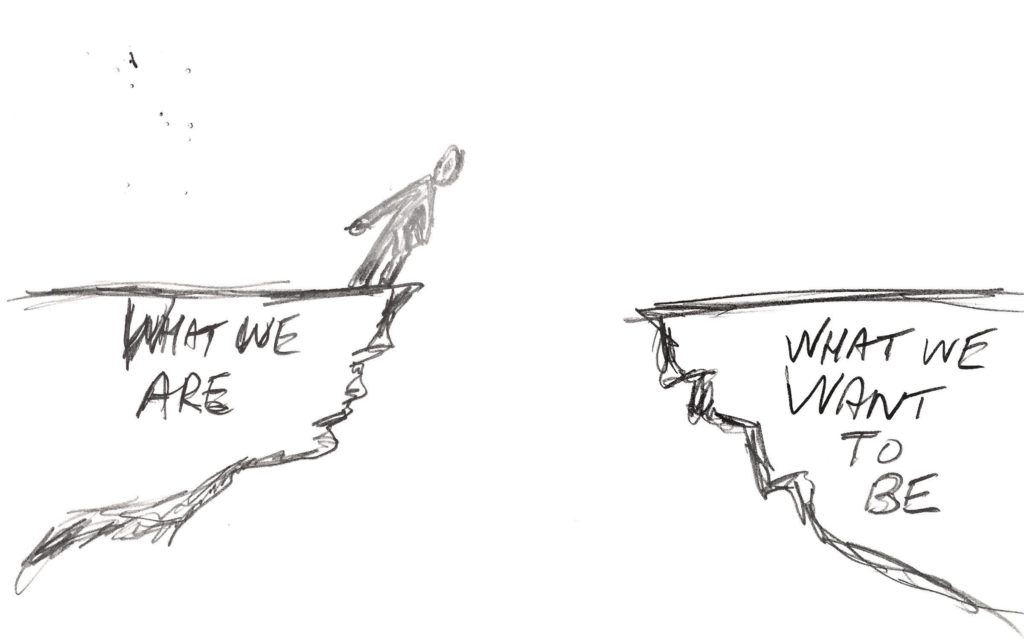It’s time to deep-dive into a topic that’s super important in the corporate world, yet often feels like trying to wrangle a unicorn. Elusive, tricky, and with a lot of glitter involved.
I’m talking about change management. Specifically implementing change.
I remember when I first encountered the concept. I thought, “Great, another jargon-filled, over-complicated mess to deal with.” But as I navigated the choppy seas of corporate life, I quickly realized it wasn’t a mess. It was more like a puzzle. And guess what? I love puzzles.
And the best part?
These elements didn’t just slightly improve my change process – they made it repeatable and predictable.
So, are you ready to revamp your approach to change management and take your projects to the next level? Buckle up, because we’re about to go on a wild ride through the world of change management.
Element 1: Creating a Clear Vision
Okay, let’s kick things off with our first element:
A clear vision is of course the destination. But it’s more than that. It also answers – and perhaps more importantly – the ‘why’. Why must we act now? Why in this manner?
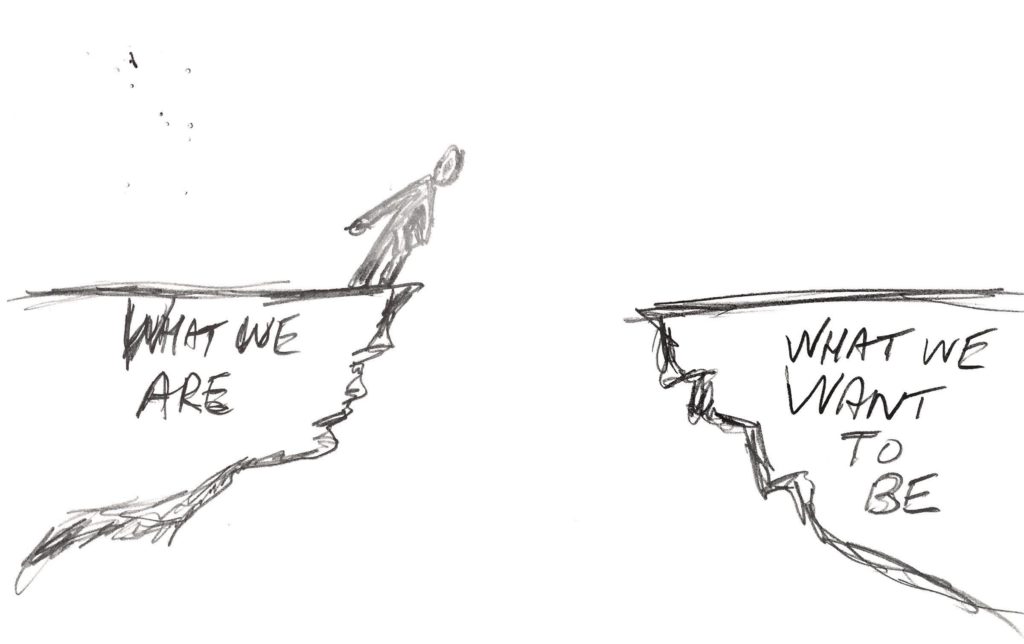
We need to inspire the entire organization to move on from the status quo, driven by rational business goals.
Years back, when I first dipped my toes into the organizational change management waters, I thought a clear vision was a fancy term for “knowing what I want.” But boy, was I off the mark. Successful change management so much more than that.
It seems crazy to say, but in organisations are no different to how individuals operate in life. We know we sho uld change, but it’s hard to articulate. Doing so shocks and excites the organization into action.
Having a clear vision is like having a detailed blueprint that shows you not only what the final building will look like, but also lays out the foundation, the floor plans, the structural elements, even where the windows will go. It’s specific, comprehensive, and leaves little room for “uh-oh” moments.
And trust me, those “uh-oh” moments? You want to avoid them like a pop-quiz on a Monday morning. I learned this the hard way when my team ended up mired in confusion over a project, because our ‘vision’ was more like a sketch on a napkin rather than a full-blown architect’s plan.
Having a clear vision is the first step in developing the change management strategy.
So, how can you craft a clear vision? Start with your end goal your change initiative. What’s the final ‘building’ you want to see? Then dive deep into why we must change? Why not just do nothing? Why now and not later? (Everyone is busy after all.) What is the evidence – is there any hard data?

Then bring in an ever wider group of senior leaders and share the vision with them. Get their input. This is the first step in leadership engagement.
Remember, a clear vision isn’t a luxury – it’s a necessity. And the best part? It’s not just about avoiding confusion. A clear vision gives your team something to rally around, a common goal that encourages collaboration and drives progress. It’s the first step to making change not only manageable, but exciting.
So there you have it – Clear Vision. The first of our seven game-changing elements, and the blueprint for your change management success. Up next, we’re tackling Leadership Engagement. Because once you’ve got the plan, you’ll need a crack team of leaders to turn that blueprint into reality. Let’s keep going
Element 2: Leadership Engagement
Alright, you’ve got your blueprint. Awesome! 🙌 Now, let’s talk about the folks that are going to help you turn that blueprint into a skyscraper.
If your clear vision is the blueprint, your leaders are the construction foremen. They’re the folks on the ground, making things happen, brick by brick, floor by floor. 🏗️
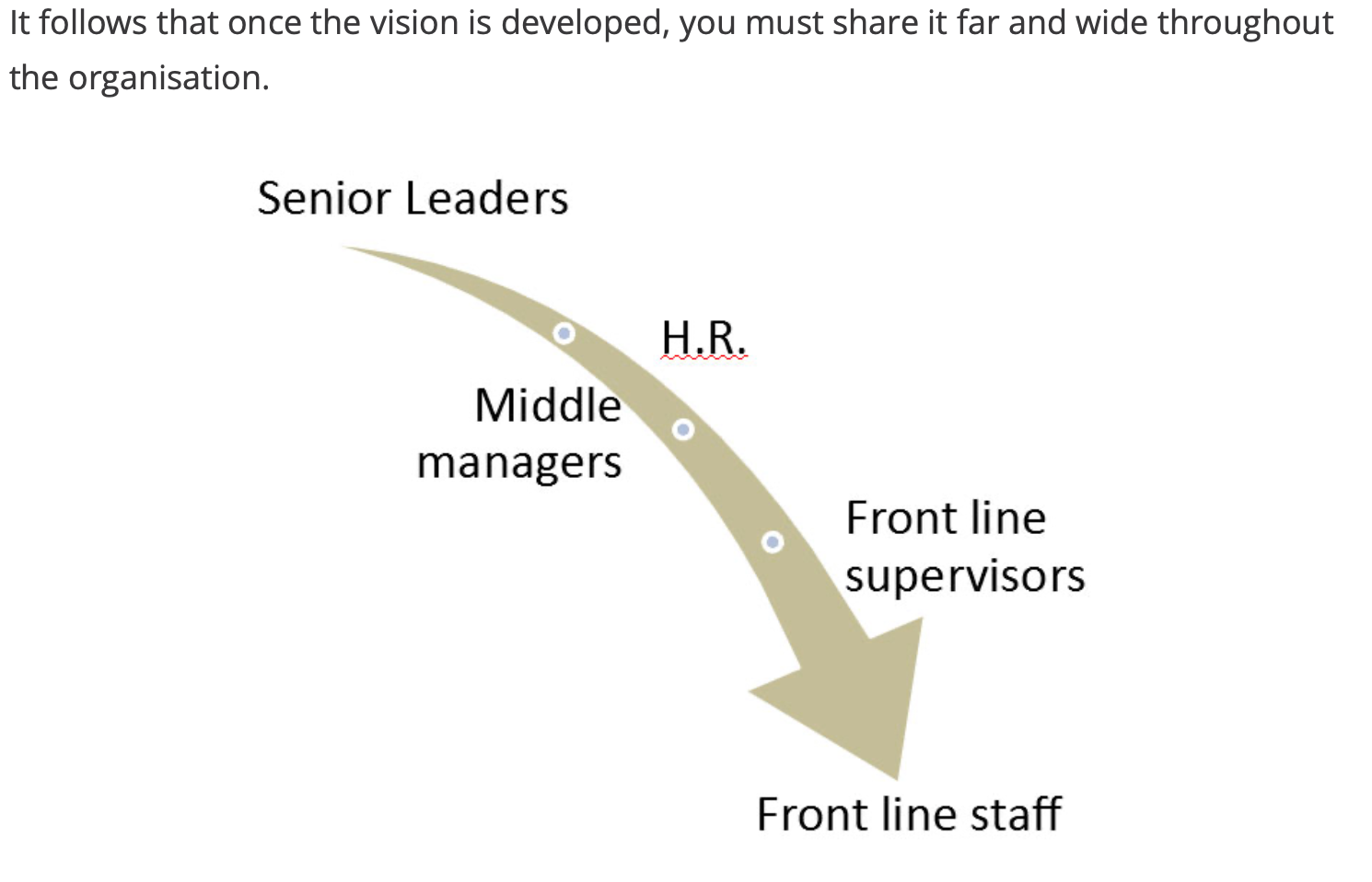
But here’s the catch: they can’t just be ‘involved’. You need them engaged. Spiritually. Emotionally.
I’ve seen projects where leaders are simply ‘involved’. They’re present, sure. But are they engaged? Not so much. It’s like having a foreman on your construction site who’s more interested in his sandwich than the building going up. 🥪 Not the best scenario, right?
Leadership Engagement means your leaders are not just present, but active. They’re rallying their teams, troubleshooting problems, celebrating wins. They’re your cheerleaders, problem-solvers, and sometimes, the shoulder to lean on.
So how do you engage your leaders?
1. Clear Roles: 🎯 Make sure they know what they’re responsible for. What’s their ‘floor’? What’s their ‘room’?
2. Open Communication: 📢 Encourage them to voice their ideas, their concerns. This isn’t a one-person show. It’s a team effort.
3. Recognize Achievements: 🏆 Celebrate the small victories. Got the foundation done right? Celebrate! Completed a tough ‘floor’? Bring out the party hats!
The bottom line: Engaged leaders are your project’s secret weapon. They turn blueprints into reality, and teams into powerhouses. 🚀
And there you have it – Leadership Engagement.
Your blueprint’s ready, your leaders are pumped. What’s next?
Effective Communication. Because even the best plans and the most engaged leaders won’t get far if the lines of communication are tangled.
Element 3: Effective Communication
Alright, you’ve got your blueprint (Clear Vision) and you’ve got your construction foremen (Leadership Engagement). But how do you ensure everyone’s singing from the same hymn sheet? Enter:
👉 Effective Communication. 👈

The best analogy I have come across is that effect change communication is like glue. The right amount in the right spots holds things together, but too much in the wrong spots gums up the whole works.
Likewise in the real world, it is important that you must communicate as part of your change management processes. And, following the glue analogy, erring on the side of too much is better than not enough.
Too many change leaders and senior stakeholders want to reduce communication plans and not communicate at all. While there is good reason to not over communicate and gum up the works, it is the lesser of the problems.
But let’s be clear: Effective Communication isn’t just about sending emails or hosting meetings. It’s about making sure your message is clear, understood, and actionable.
We have all see the emails that are too wordy, unclear or irrelevant. We’re all busy and it feels like they’re robbing us of valuable time.
So what are the element of effective change communications?
1. Clarity: 🎯 Keep it simple. No jargon, no fluff. Just straight-up, plain English.
2. Two-Way Street: 🚦 Encourage questions, feedback. Communication shouldn’t be a monologue.
3. Regular Updates: 📢 Keep everyone in the loop. Progress updates, new challenges, small victories – share it all.
5.Relevance: Ensure the message is relevant to the context, audience and channel. Sometimes a meeting should just be an email.
With Effective Communication, you’re making sure just the right amount of glue is added to your creation. Your team is on the same page, working together to bake that perfect masterpiece.
Element 4: Stakeholder Buy-in
We’re rolling along nicely! With our blueprint, foremen, and communication plan locked in, it’s time to turn our attention to the people who really matter.
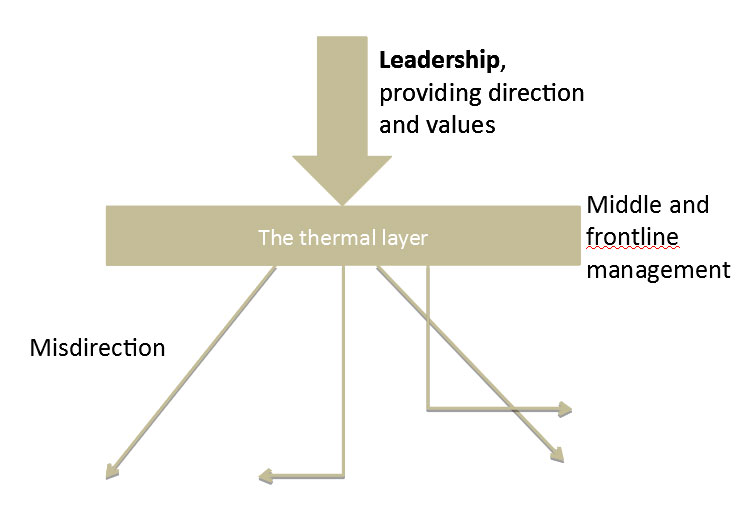
Think of your project as a blockbuster movie. Your vision is the script, your leaders are the directors, and communication is your crew. But who’s going to watch your movie if you don’t have an audience? 🍿
In the world of change management, your key stakeholders are your audience. They’re the people invested in your project’s success. If they’re not buying what you’re selling, you’re going to have empty seats at your premiere. You do so by securing buy-in.
Been there, done that, and let me tell you: premiering to an empty room? Not fun.
So how do you get Stakeholder Buy-in?
1. Understand Their Needs: 🧩 What do they want to see? What are their concerns? Understand these, and you’re halfway there.
2. Involve Them: 🤝 Don’t just present them with a finished product. Get them involved in the process. Make them feel a part of the journey.
3. Regular Updates: 📢 Yep, this again. Keep your stakeholders in the loop. When they know what’s happening, they’re more likely to stick around for the ride.
Remember, Stakeholder Buy-in isn’t just about getting a thumbs-up for your project. It’s about building a relationship with your stakeholders, turning them from passive observers to active cheerleaders. Having the stakeholders understand and get actively involved in the change initiative.
Element 5: Appropriate Training
Blueprint, foremen, crew, audience… check, check, check, and check! Now, let’s get down to the real action.
Remember when you first learned to ride a bike? You didn’t just hop on and start pedaling. You needed someone to show you the ropes. That’s training. Learning a new skill or behaviour.
But not everything is like learning to ride a bike. Sometimes, you don’t need training wheels – you just need to ‘know’. Or a little knowledge transfer. 🧠➡️🧠
In the world of change management, knowing the difference between training and knowledge transfer is a game-changer.
But what is the difference, exactly?
Training is like learning a new skill. It’s the how-to manual for a task you’ve never done before. Need to learn how to use a new software? That’s training.
Knowledge transfer, on the other hand, is about sharing insights, tips, and experiences. Got a colleague who’s an expert at handling difficult clients? When they share their strategies with the team, that’s knowledge transfer.
So how do you decide when to train and when to transfer knowledge?
Ask yourself: Is this a new skill or an enhancement of an existing one? If it’s a new skill, opt for training. If it’s about refining an existing skill or sharing insights, go for knowledge transfer.
Remember, the goal here is not to bombard your team with training sessions. It’s about empowering them with the right skills and knowledge to operate in the new ways of working.
And that, my friends, is the beauty of Appropriate Training.
So, where are we? Blueprint? Check. Engaged Leaders? Check. Clear Communication? Check. Stakeholder Buy-in? Check. Appropriate Training? Check.
Element 6: Strong Project Management for change management
Buckle up, folks! We’re on to element number six.
You’ve got the blueprint (Clear Vision), the foremen (Leadership Engagement), the crew (Effective Communication), the audience (Stakeholder Buy-in), and even the skills (Appropriate Training). But how do you make sure the movie gets made on time and under budget? That’s where Strong Project Management for change management steps in. 🕺
That’s right, change managers need project skills and resources, too.
If change management were a movie, Project Management would be the production manager. They ensure that everything runs smoothly, on schedule, and that all pieces of the puzzle fit together seamlessly.
And let’s be honest, when we’re dealing with change, uncertainty and ambiguity often takes center stage, leading to what we dread most: resistance.
What looks like resistance is actually confusion.
Been there, done that, got the t-shirt. Not a fun place to be, trust me.
Strong Project Management reduces ambiguity. This forms the basis of your resistance management plan. It’s like turning on a light in a dark room. You know where everything is and where you’re going. That room isn’t so scary anymore.
So, how do you ensure Strong Project Management?
1. Clear Roles and Responsibilities: 🎯 Who’s doing what? When? Make it crystal clear.
2. Milestones and Deadlines: 🗓️ When is each ‘scene’ of your ‘movie’ due? Set milestones and stick to them.
3. Regular Progress Updates: 📢 How’s the ‘movie’ coming along? Keep everyone informed. Celebrate the small wins, and tackle issues head-on.
4. Mitigate Ambiguity: 💡 Shine a light on uncertainties. Got a potential issue? Address it. Don’t let it fester in the background.
Remember, Strong Project Management isn’t about micromanaging. It’s about steering the ship steadily towards your goal, keeping everyone focused, and turning ambiguity into clarity.
Element 7: Monitoring and Feedback
Here we are, at the grand finale. You’ve got your blueprint, your foremen, your crew, your audience, your skills, and your production manager.
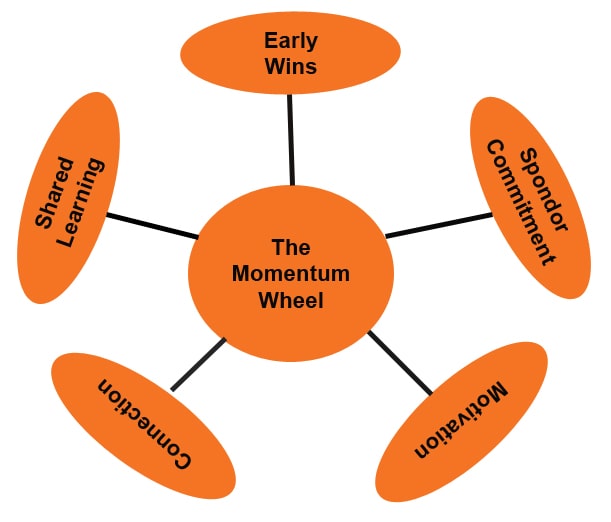
Think of it like this: You’ve released your movie (change project), and it’s a hit! But are you going to sit back and relax? Nope! You’ll want to know what worked, what didn’t, and how you can make your next movie even better. That’s Monitoring and Feedback. 🎥
In change management, Monitoring and Feedback is like your after-party. It’s where you take stock, gather insights, and use that knowledge for your next blockbuster project.
Ever been to a party where you couldn’t wait to leave? I have. It’s not fun. But when you know what went wrong, you can avoid those missteps in the future.
So how do you ensure effective Monitoring and Feedback?
1. Measure Success: 🎯 Set clear metrics and key performance indicators. How will you know if your change project was successful? What does success look like?
2. Feedback Channels: 📢 Collect feedback. Create open, welcoming channels for feedback. Encourage your team to share their thoughts, ideas, even criticisms.
3. Learn and Improve: 🧩 Take the feedback, learn from it. Use it to improve your future projects.
Remember, Monitoring and Feedback isn’t a one-and-done deal. It’s a continuous process of continuous improvement.
And there we have it, the final element – Monitoring and Feedback.
And with that, we’ve covered all seven elements of change management. From Clear Vision to Monitoring and Feedback, these are your keys to transforming your projects overnight.
Stay tuned for more insights on how to become the director of your own blockbuster change projects. ⏰
Conclusion
And…Cut! 🎬 That’s a wrap on our deep-dive into the Seven Game-Changing Elements of Change Management. From establishing a Clear Vision to the importance of Monitoring and Feedback, we’ve navigated the winding roads of change together.
Remember, change is not the enemy. It’s a constant in our lives, especially in the corporate world. But with these seven elements in your change process, you’re not only equipped to deal with change – you’re ready to harness it, direct it, and make it work for you.
So next time you’re faced with a change project, don’t view it as a daunting challenge. See it as an opportunity to direct your own blockbuster. 🍿
I hope you’ve found these insights as valuable as I did when I first discovered them. Remember, mastering change management is a journey, not a destination. It’s about continuous learning, adapting, and growing.
Stay tuned, keep learning, and keep growing. See you at the movies! 🎥
Recommended Reading
For more on the critical elements of change management process, check out this post on change management models.
And of course, keep checking back for more insights and practical tips on mastering the art of change management.
Stay tuned! ⏰

